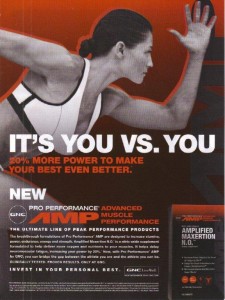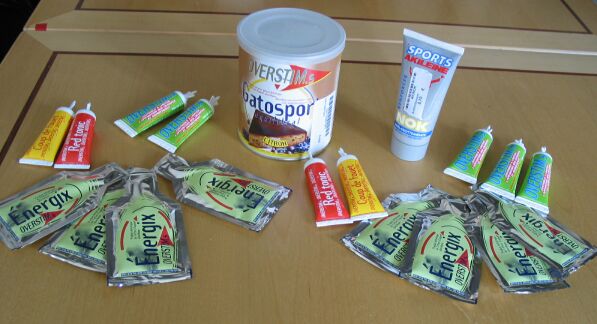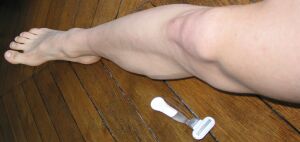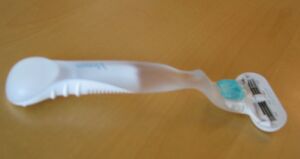| Dernière mise-à-jour : June 19th, 2011
New pages : Vacation in St Barth, Irondaddy 101, Ironman Brasil 2011 Last races : NYC Half-Marathon 2011, Ironman Canada 2010, Escape from Alcatraz Triathlon 2010, Boston Marathon 2010, Ironman Florida 2009, Ironman USA 2009, Half-Marathon Bronx 2009, NYC Marathon 2008 , Ironman Brasil 2011. Next races : Diagonale des Fous 2011 NYC Marathon 2011 |
Last movies : Black Swan (+++), Inside Job (+++), Food Inc. (++), Inception (+++), Up in the Air (++) Last restaurants in Paris : Monjul (++), Meurice (Dali, +++), Pershing Hall (brunch, +), Liza rue de la Banque (-), Ledoyen avenue Dutuit (+++), Les Ambassadeurs (+++), Carré des Feuillants (+++), Tante Marguerite rue de Bourgogne (+++), Séraphin rue Mabillon (++), Le Petit Verdot rue du ChercheMidi (+++), Il Cortile rue Cambon (-, trop cher), Café Fusion rue de la Butte aux Cailles (++), J'go rue Drouot (+), Brasserie Haussmann (-/+), Mori Venice Bar (+++), 16 bld Haussmann, (++), MusicHall (+++), Fuxia place du marché Saint-Honoré (+++), l'Enoteca rue Montorgueil (++), Last restaurants in NYC : Fat Radish (+++), Morandi (++), A Voce Colombus (++), Wallsee (brunch +++), Seasonal (brunch +++), Bouley (lunch menu +++), Cortone (+++), Aureole (lunch menu ++), SHO (lunch menu ++), Cafe Boulud (+),Marea (lunch emnu ++), Picholine (lunch menu ++), Friend of a Farmer (-), Eleven Madison (+++), Bar Boulud (brunch ++), Colichio & Sons (brunch ++), Recipe (+++), Hundred Acres (+++), Jane (brunch ++), Little Giant (brunch ++), 10 Downing (++), Aquavit (+++), Maze (++), Smith & Wollensky (+), Park Avenue Summer (+++), Abe & Arthur (++), Tribeca Grill (+), Megu (+++), Park Avenue Winter (+++), David Burke Townhouse (+), Robuchon (+++), DBGB(+++), Gramercy Tavern (++), One if by Sea Two if by Land (++), Cafe Mogador (++), JoJo (++), Nobu (+++), Nougatine @ Jean-Georgres (+++), Le Cirque (-), Mercer Kitchen (++), Eatery (++), Macao Trading Company (++), Perry Street (+++), L'Eskina (+++), La Lunchonette Chelsea (++), Spotted Pig (++),Commerce (++), The Orchard (-), Essex (+++), Boucarou (+), CongeeVillage ;-), Allen & Delancey (+++), Cafe Ino (++); Merkato 55 (-), Public (+++), Stanton Social (++), Spice Market (+++), Delicatessen ny (++), Shiller Liquor's Bar (++), Bagatelle (+++), JG Mellon (++), Butter (+++), Paradou (+), Home (++), Red Cat (++), Thor (+), Employees Only, Rosa Mexicano (18th and 5th), Aquagrill (Spring and 6th), Jamon (btw Gramercy and Union Square), WD-50, Modern, Momoya, Tartine, Persepolis, Spice, The Viceroy (brunch ++, 8th and 18th), Fig and Oliv (+, Lex and 63th), Azul (+, Sufolk and Stanton), Parlor Steackhouse (3rd and 90th), Freemans at then end of Freemans Alley (++), Island Burgers & Shakes (+, sympa), Burger Joint at Le Parker Meridien (+) Last bars/clubs in NYC : Le Bain, SL, The Box, Juliet, Bungalow 8, Beauty Bar, RDV, Mr West, Cain, Greenhouse, Pink Elephant, Tenjune,Kiss and Fly, Marquee, Cielo, Backroom, 230. |
Du rasage des jambes a la dietetique des complements alimentaires - que faire ?
 |
Tres pratique, aux USA, on peut acheter en vente libre RegiMEN Testosterone Support ou encore nutrabolics® HemoTest™ Advanced Testosterone Support Formula. Sympa. Beaucoup de marketing aupres des "non body builders" comme les triathletes. "50% plus de puissance" explique-t-on a cote. Mais ne demandez pas pourquoi ni comment.... |
 |
La nutrition sportive est un business florissant. Quelques euros ou dollers c'est ambiance pharmacie Festina sur la table du salon... |
Une industrie peu critiquee ???
Un petit pdf qui explique les differents produits pousses par les marques, de Gatorade a Herbalife.
http://www.extension.umn.edu/family/W00029.pdf
Supplements are a billion-dollar business with little to no scientific validation for use by athletes. Safety testing and control of these products are poor. If you feel your diet is inadequate but you’re not certain if supplementation is appropriate or necessary, see a Registered Dietitian or speak with a Physician. Do some research on supplements before purchasing because there are some good products on the market. However, many are useless and will not provide the benefits they claim and will cost a small fortune.
Et ici un article sur les supplements nutritionnels et les athletes :http://www.nsca-lift.org/HotTopic/download/Nutritional%20Supplements.pdf
Alors que faire ?
Certains se dopent, d'autres jurent que se raser les jambes peut faire gagner de precieuses secondes...
Voila quelques liens sur le sujet:
Sharp RL, Hackney AC, Cain SM, and Ness RJ (1988): The effect of shaving body hair on the physiological cost of freestyle swimming. Journal of Swimming Research 4(1):9-13.
Abstract: The purpose of this study was to determine if shaving of body hair would have an effect on the physiological cost of standard swimming velocities. Physiological effort required to swim at a given velocity was assessed using determinations of blood lactate concentration 2 min after each of four 200 yard freestyle swims. Six subjects volunteered and were asked to swim four 200's with 15 min rest between each and reducing their time by roughly 10 sec on each consecutive swim. On the next day, subjects shaved their body hair from arms, legs and exposed torso and repeated this swimming protocol. Blood lactate accumulation at a submaximal speed of 1.08 m/sec was significantly reduced by an average of 28% by shaving. Blood lactate accumulation at a maximal swimming speed of 1.30 m/sec was significantly reduced by an average of 23%. This much change in the physiological cost of submaximal and maximal swimming speeds is nearly as great as that resulting from a season of collegiate swimming training. It was concluded that there is indeed a physical benefit to shaving-down (most likely a reduction in body drag) and that the benefits are not solely due to a psychological response.
Sharp RL and Costill DL (1989): Shaving a little time. Swimming Technique 26(3):10-13.
Abstract: In summary, it has been demonstrated that removing exposed body hair decreased the physiological effort required to maintain a given velocity during breaststroke swimming but has no effect on physiological responses during tethered swimming. These findings, in combination with measurement of velocity decay after a maximal underwater leg push-off from the side of the pool, are taken as evidence that the mechanism for the improvement in competitive swimming performance following body hair removal is related to a reduction of active drag. The extent to which the present responses may result in improved maximal performance cannot be determined from the present data, but it is reasonable to conclude that factors decreasing the physiological response to submaximal exercise will benefit performance capacity. Thus, it is concluded that the use of this procedure before major competitions provides a measurable physiological advantage for the swimmer.
Sharp RL and Costill DL (1989): Influence of body hair removal on physiological responses during breaststroke swimming. Med.Sci.Sports Exerc. 21(5):576-580.
Abstract: 9 male collegiate swimmers (EXP) were studied 8 d before (PRE) and 1 d after (POST) shaving the hair from their arms, legs, and exposed trunk. A control group (CON, N=4) of their teammates was also tested at these times but did not remove body hair. In PRE and POST, distance per stroke (SL), VO2 heart rate (HR), and post-swim blood lactate concentration were measured during a 365.8 m breaststroke swim at ~90% effort. Subjects also performed a tethered breaststroke swim with retarding forces of 6.27, 7.75, and 9.26 kg. The EXP group experienced a significant (P<0.05) reduction in BL (mean ± SE: 8.48±0.78 to 6.74±0.74 mmol/L), a decreased VO2 (3.60±0.15 to 3.27±0.14 L/min, an increase in SL (2.07±0.08 to 2.31±0.10 m/stroke), and an insignificant (P=0.08) decline in HR (174±5 to 168±4 beats/min) during the free swim. The CON group showed no changes in BL, SL, or HR. During the tethered swim, there were no significant PRE-POST differences in VO2, HR, or BL for either group. In a separate group of swimmers (nine who shaved body hair and nine controls), removing body hair significantly reduced the rate of velocity decay during a prone glide after a maximal underwater leg push-off. It is concluded that removing body hair reduces active drag, thereby decreasing the physiological cost of swimming.
Johns RA, Houmard JA, Kobe RW, Hortobägyi T, Bruno NJ, Wells JM, and Shinebarger MH (1992): Effects of taper on swim power, stroke distance, and performance. Med.Sci.Sports Exerc. 24(10):1141-1146.
Abstract: Competitive swimmers progressively reduce training volume or ''taper'' prior to an important competition in an effort to improve performance capabilities. The purpose of the current study was to determine the effects of taper upon factors associated with swim performance. Twelve intercollegiate swimmers were tested before and after taper in preparation for their season-ending meet. Power during a tethered sprint swim increased significantly (P < 0.05) by almost-equal-to 5% with taper. No significant changes occurred in distance per stroke, oxygen consumption, and post-exercise blood lactate level during a 182.9-m submaximal swim with taper. Five swimmers were additionally tested after shaving exposed body hair upon completion of taper. Swim power did not increase further with hair removal. In contrast, shaving significantly increased distance per stroke (P < 0.05) by almost-equal-to 5%. These data indicate that reduced training specifically improves swim power; however, removing exposed body hair after taper may additionally enhance performance capabilities by increasing distance per stroke.
Source: http://www.soloswims.com/shaving.htm
The effect of athletic clothing aerodynamics upon running speed. Kyle CR, Caiozzo VJ.
Abstract: The purpose of this study was to determine the effect of the wind resistance of athletic clothing upon running speed in sprinting and in distance running. Wind tunnel tests of clothing materials, hair, and shoes show that it is possible to lower the wind resistance of a runner from about 0.5% to over 6% by improved aerodynamics. Mathematical models of sprinting and distance running are developed to predict the effect of lower wind resistance upon race times. By lowering the wind resistance of a runner 2%, the models predict the effect of lower wind resistance upon race times. By lowering the wind resistance of a runner 2%, the models predict time savings from 0.01 s in the 100-m dash to 5.7 s in the marathon. This is the equivalent of lead distances of about 0.1 to 31 m. The sprint model may be used to predict the effect of altitude upon running speed. At the altitude of Mexico City, the model predicts an improvement of 0.08 s in 100 m and 0.16 s in 200 m. This is conservative compared to actual time savings. The results show that it is possible to lower the wind resistance significantly by improving clothing or by trimming or covering the hair, and that a small aerodynamic drag reduction can result in a significant performance increase.
http://www.ncbi.nlm.nih.gov/pubmed/3773666
Effects of wind assistance and resistance on the forward motion of a runner C. T. Davies
Abstract The aerobic energy cost (delta VO2) of running at different speeds (V) with and against a range of wind velocities (WV) has been studied in a wind tunnel on three healthy male subjects and the results compared with downhill and uphill gradient running on a motor-driven treadmill. In terms of equivalent horizontal and vertical forces, comparison showed that the two forms of exercise were physiologically identical for gradients and WV ranging from -10 to +5% and 1.5 to 15 m . s-1, respectively. The apparent mechanical efficiencies of the work performed with a head and following wind were approximately +0.35 and -1.2. At WV greater than 15 m . s-1 it was more efficient to run against the wind and the corresponding gradient on the treadmill. At high WV the subjects altered their posture and "leaned" into the wind, thus possibly converting potential drag into body lift. The energy cost of overcoming air resistance on a calm day outdoor was calculated to be 7.8% for sprinting (10 m . s-1), 4% middle-distance (6 m . s-1), and 2% marathon (5 m . s-1) running.
http://jap.physiology.org/content/48/4/702.abstract
Article sur la modelisation
http://motivate.maths.org/conferences/conf23/c23_project1.shtml
 |
 |